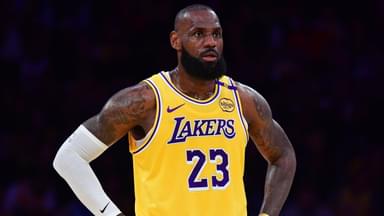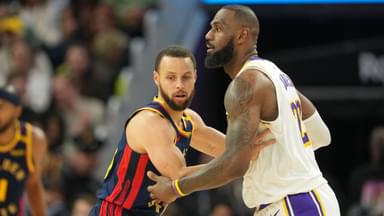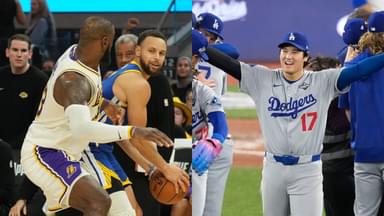The understanding of sports continues to evolve, deepening with every passing year. And as more intricate factors get added, the optimal strategies needed for success shift, too. Call it analytics, call it evolution, but if you look at how most sports are played in the year 2025, they only slightly resemble the way they were played over 20 years ago.
Advertisement
Baseball is much different, with a seemingly endless line of pitchers on any given team ready to come out of the bullpen and throw 100 mph heat. Starters don’t pitch as far into games, and hitters are mostly eschewing small ball to swing for the fences. In football, the short, high-percentage passing game is now king.
Basketball is no different. We’re in what’s been called the ‘pace and space’ era, where almost all players are expected to be able to get up and down the floor and stretch the defense from the 3-point line. There is no better person to break down the evolution in the game than LeBron James, who has transcended and stayed relevant in the league across eras.
Steve Nash and James spoke about the changes in basketball on the latest episode of Mind the Game. Nash played for 18 NBA seasons and retired in 2015. LeBron is about to enter his 23rd year in the league. Together, both guys have lived through an enormous shift in the way the game is played.
“It feels like that era,” Nash said of LeBron’s time with the Miami Heat. “It felt a little more like ‘Your turn, my turn,’ not because that’s what you were doing, but because it was a more ‘We get to this action and then he goes.’ Now it’s more random, it’s more second action, third action, make the D get in a blender, first domino.”
Nash then recalled the King’s playing style when he was with Miami. “I still remember you cutting, I still remember you screening, but it was a lot more like when it’s D-Wade’s, you gotta be spaced, right? Now it feels like you have to be ready to cut, to play second side, to screen, to play the short roll,” he said.
Nash is going deep on strategy here. But LeBron pointed out that those kinds of actions don’t work if you don’t have the players who can execute them. That said, today’s players, by and large, are much more versatile than they used to be.
“I think the personnel of teams has changed, as well,” LeBron said. “We discussed it in one of our previous episodes about OKC and Indiana and the guys that they’re putting on the floor. Pretty much everybody on the floor can dribble, pass, shoot.”
James then mentioned players like Chet Holmgren and Myles Turner, both of whom can do many more things than a traditional back-to-the-basket big man. The evolution is evident when we look at what it takes to win in the league now, compared to a decade or so back.
LeBron’s Heat won two back-to-back titles in 2012 and 2013 because they had three stars in James, Dwyane Wade, and Chris Bosh, who were just too good for the rest of the NBA. The Thunder won the most recent title by being the youngest, deepest team in the league. OKC’s 10th man — someone like Isaiah Joe — was capable of coming in, dropping some points, and playing great defense. Those Heat teams had aging, past-their-prime veterans toward the end of the bench, but that was enough.
It’s going to be interesting to see how the NBA continues to evolve. Is there much farther the pace and space era can go? Or will a new set of principles rise in its place? We don’t have to wait long to find out… The regular season tips off in just 12 days.








